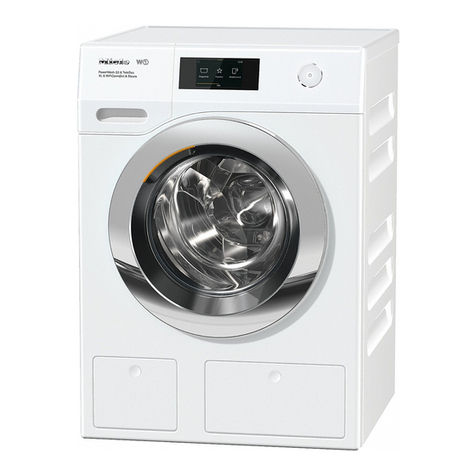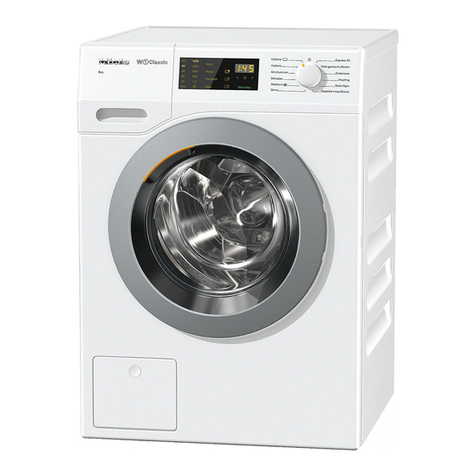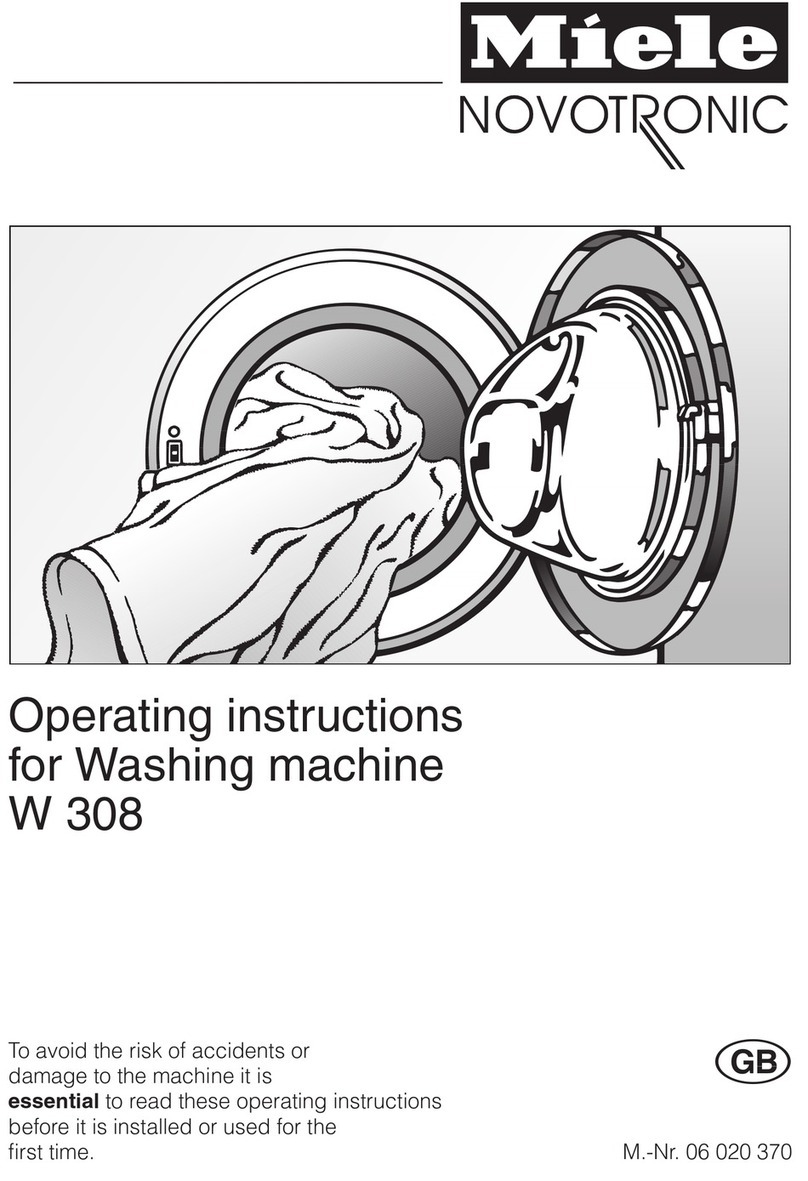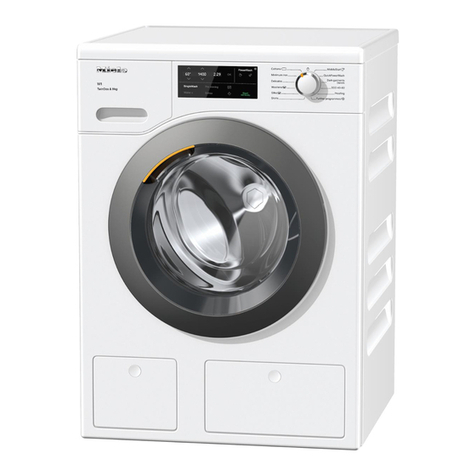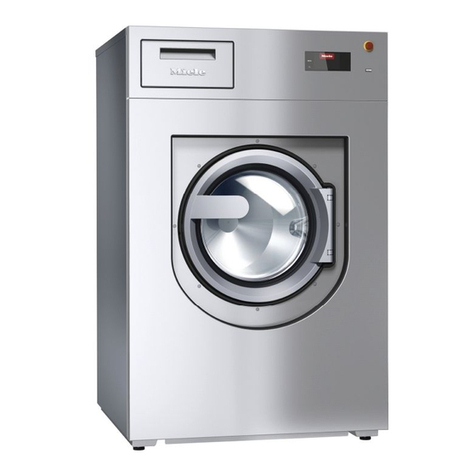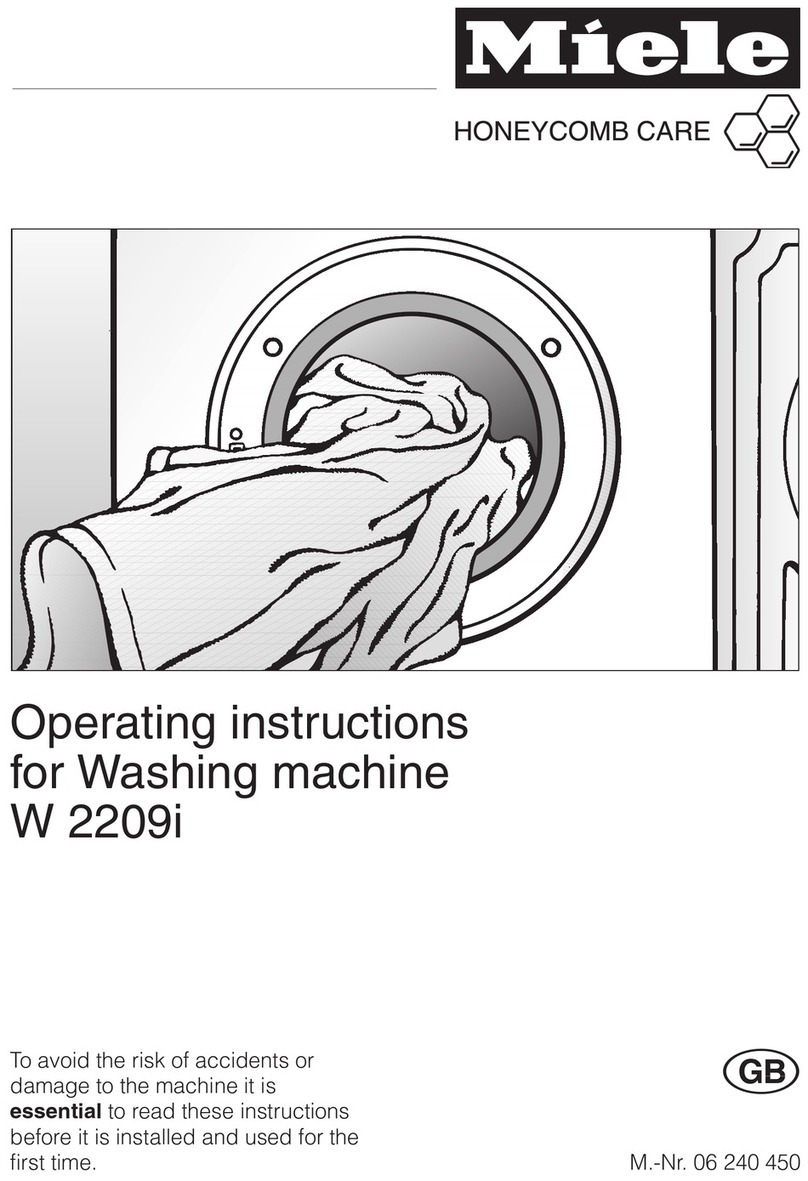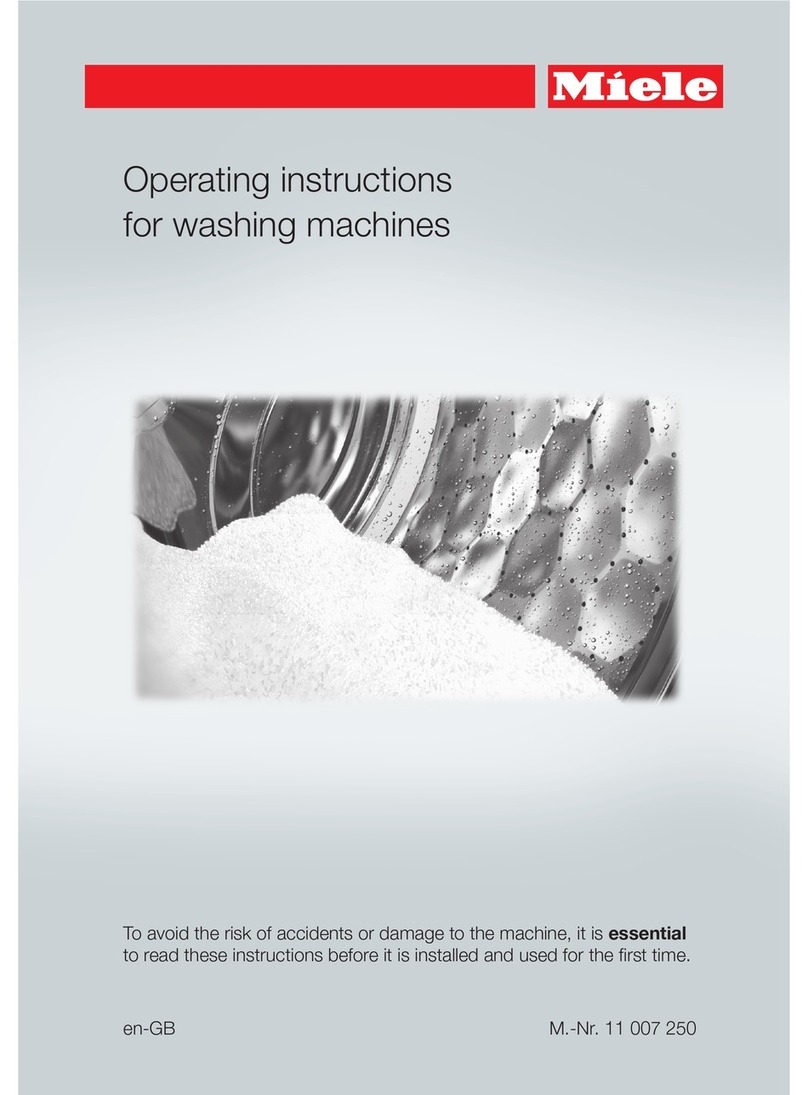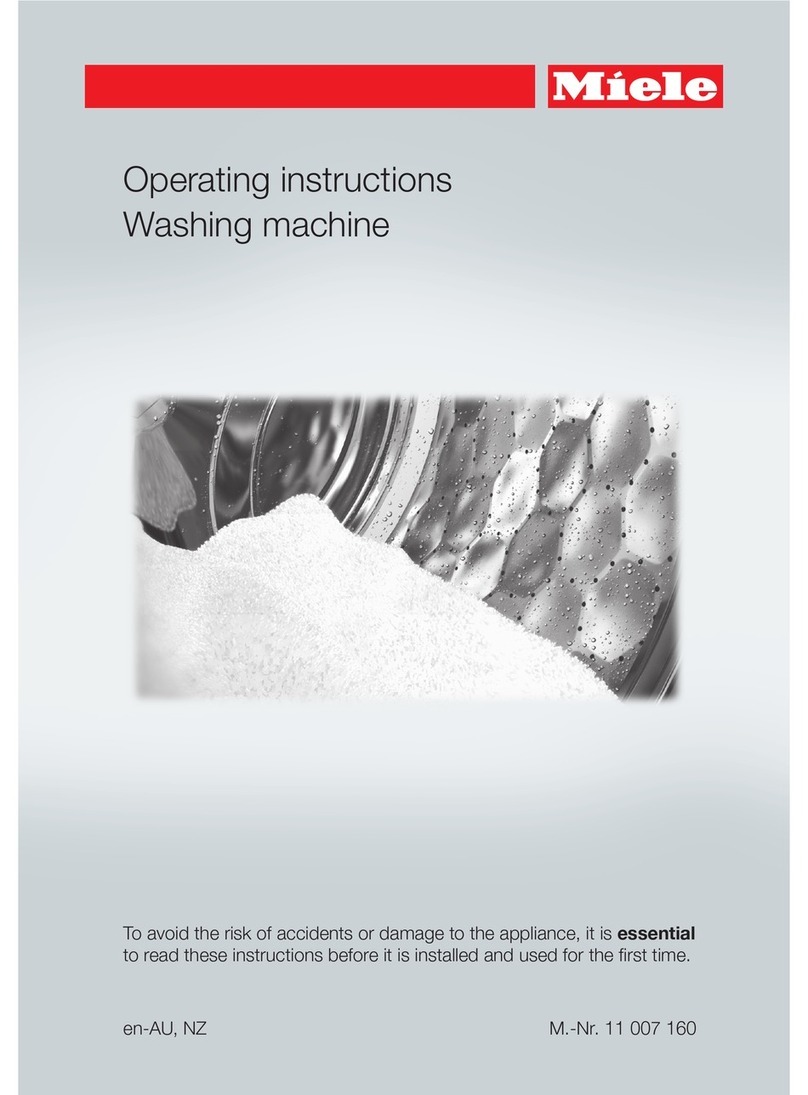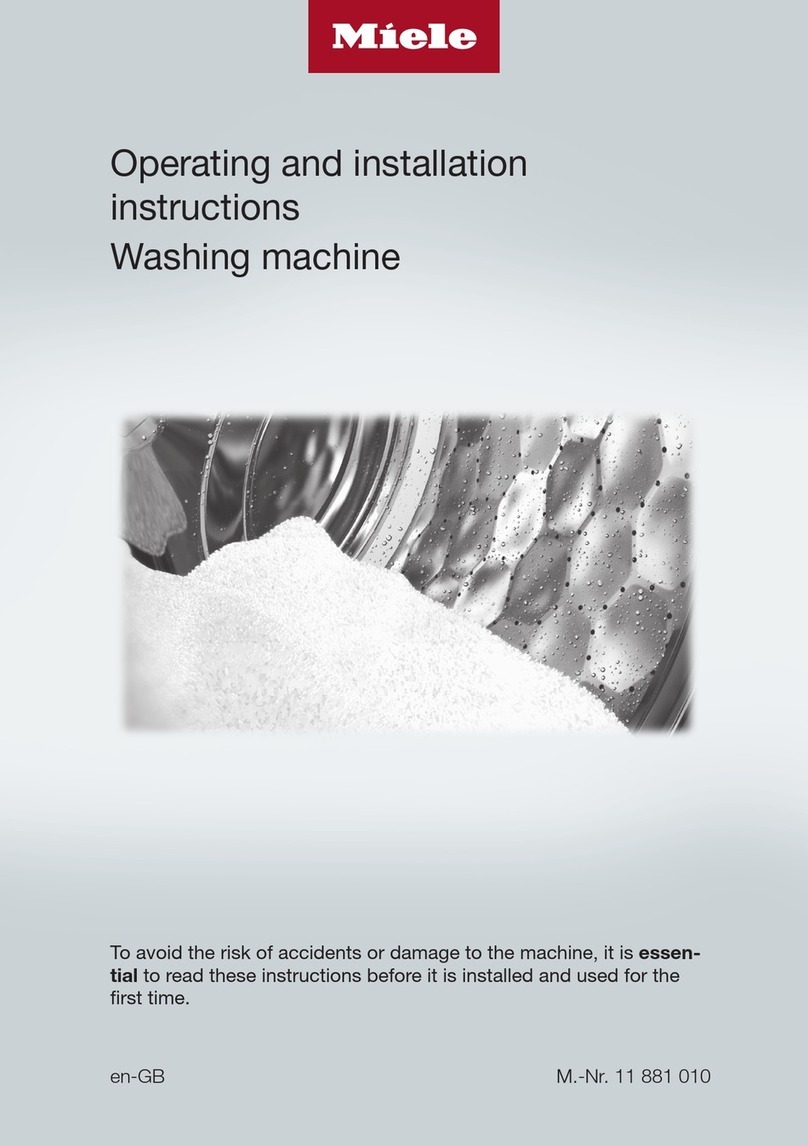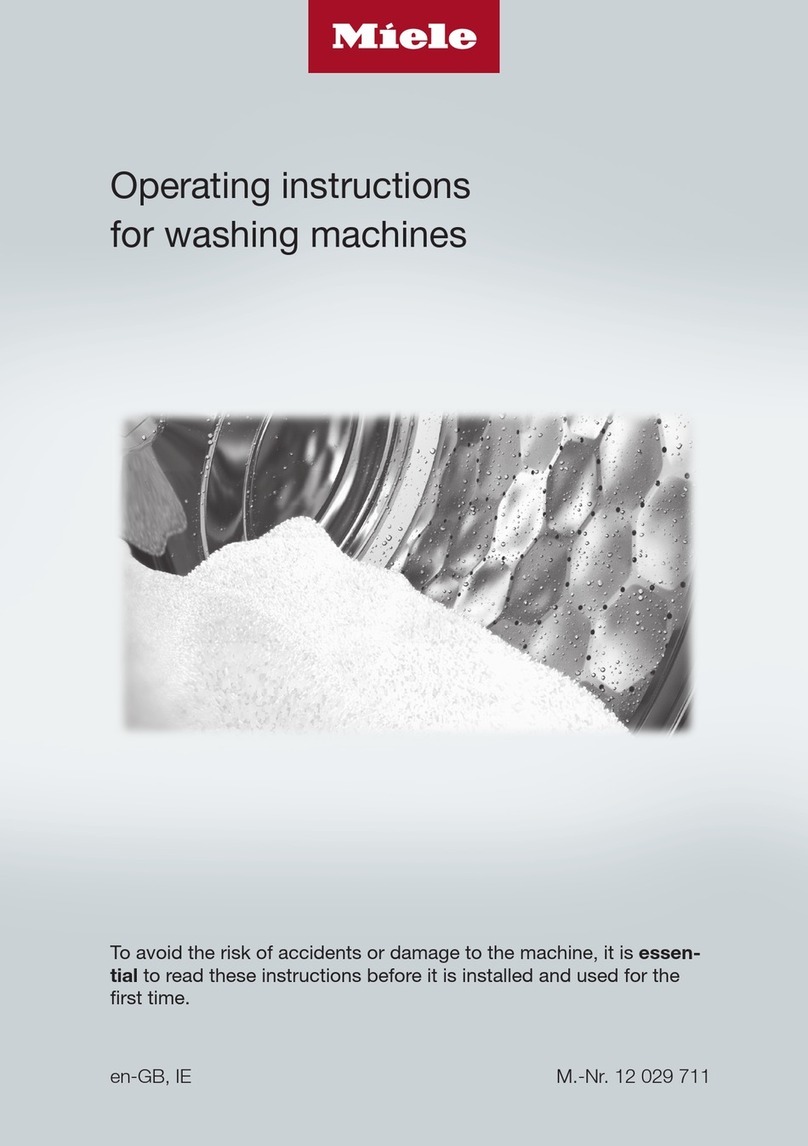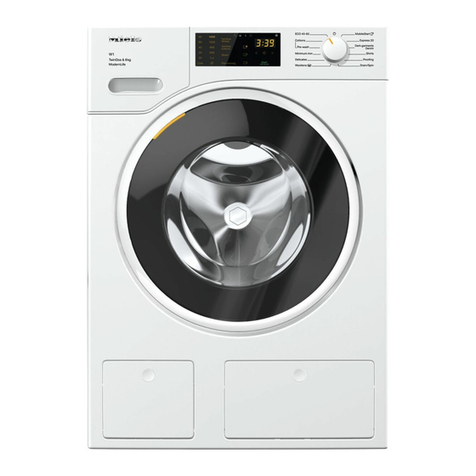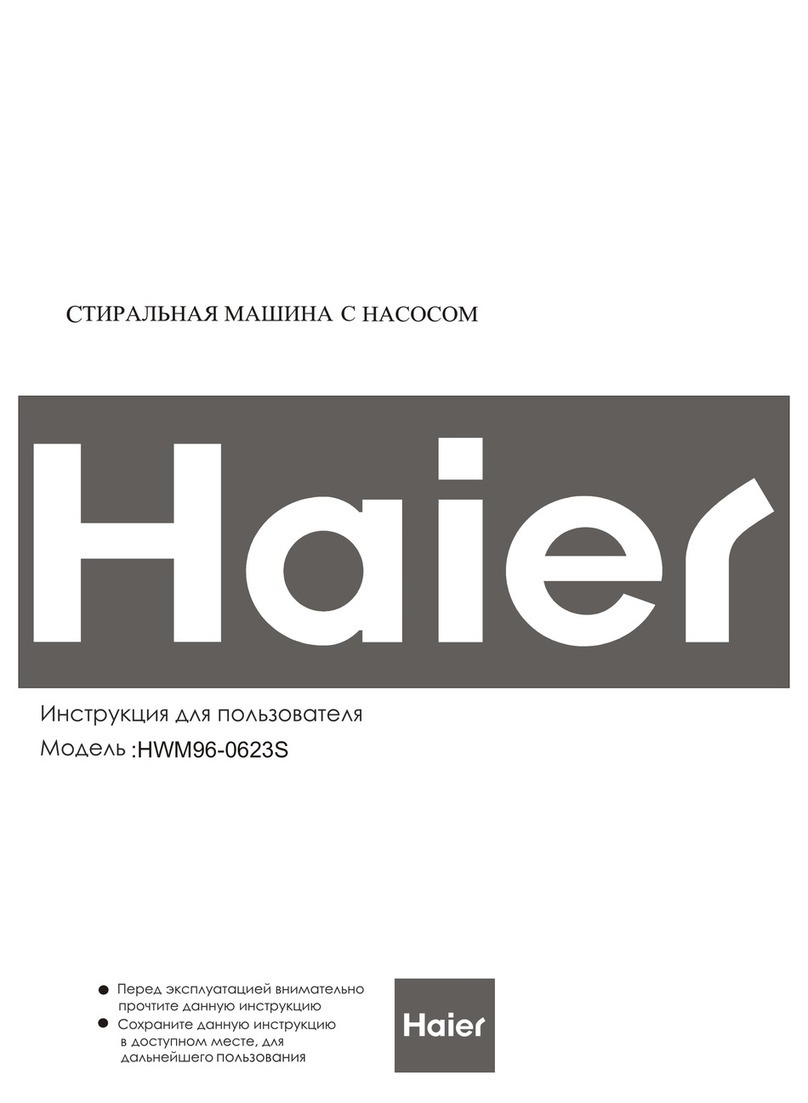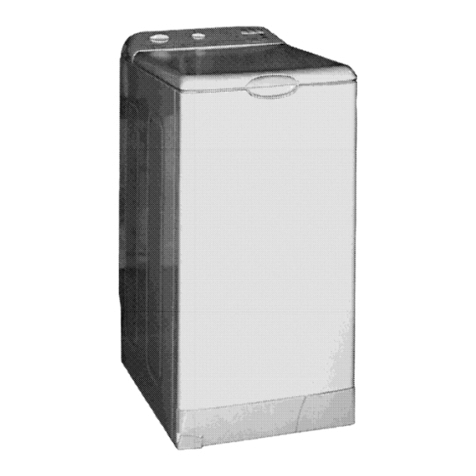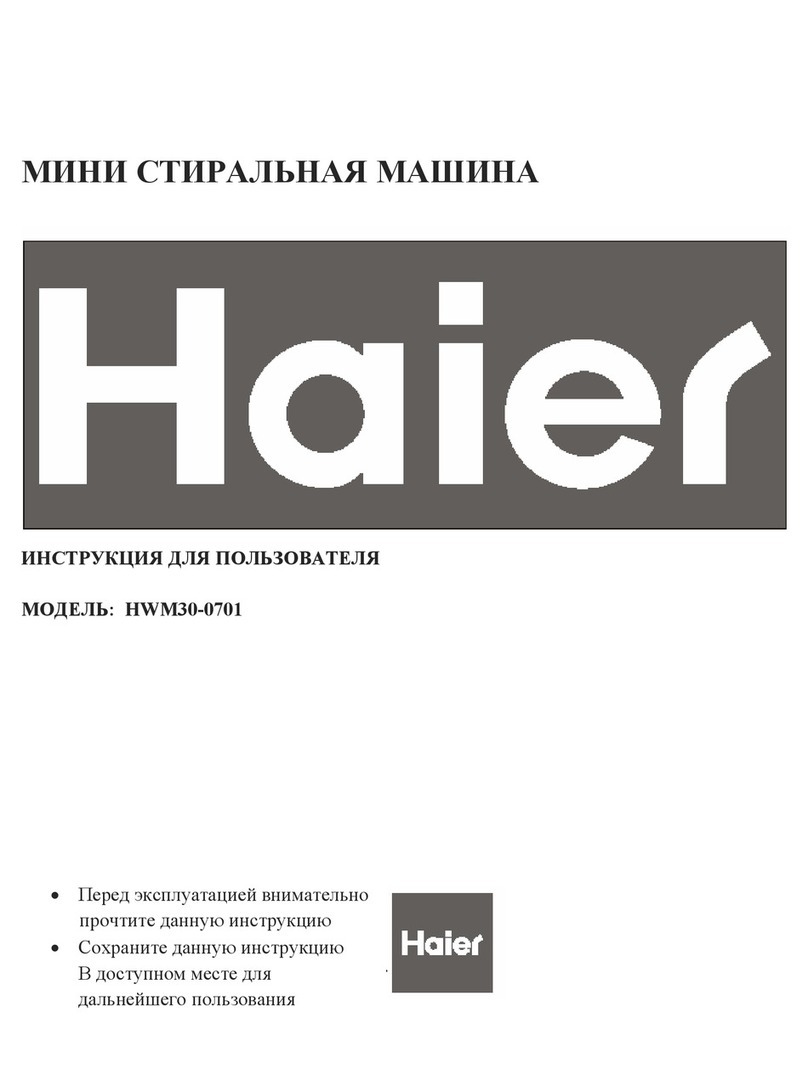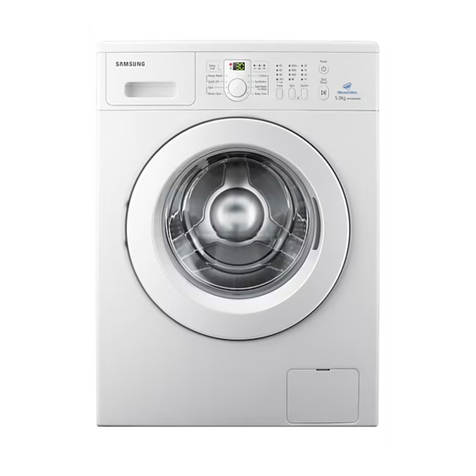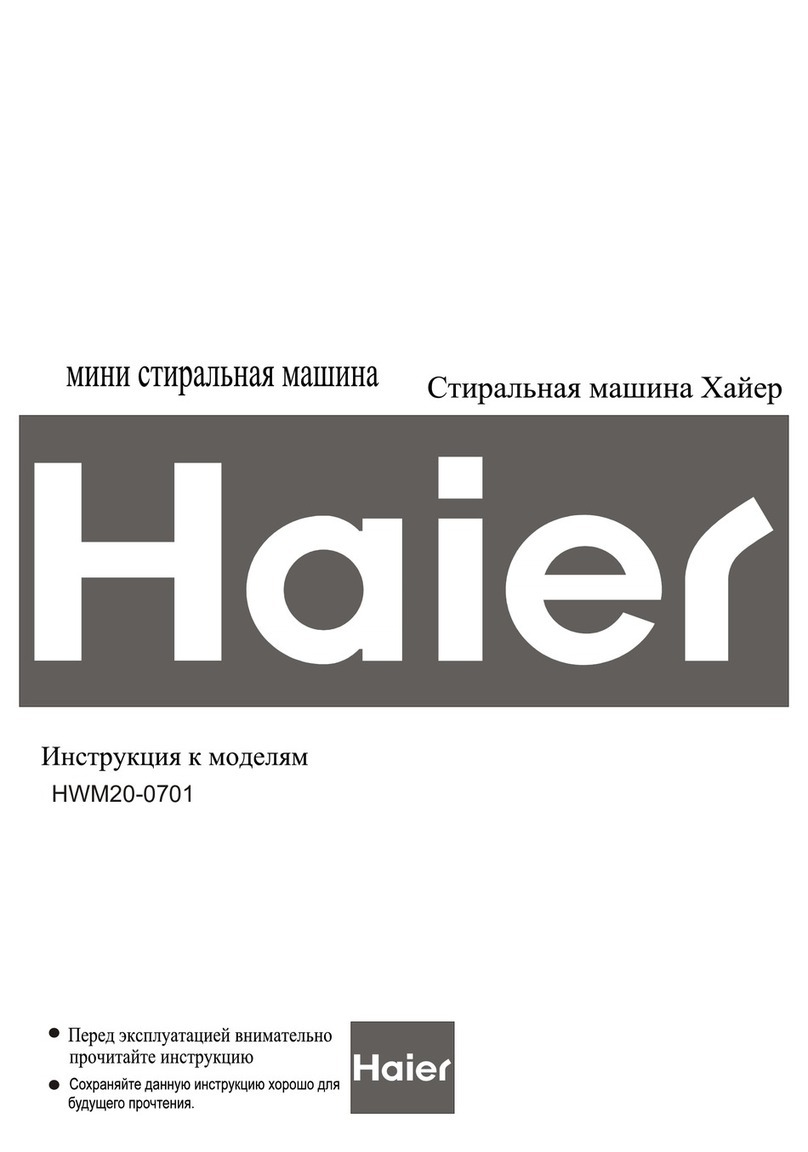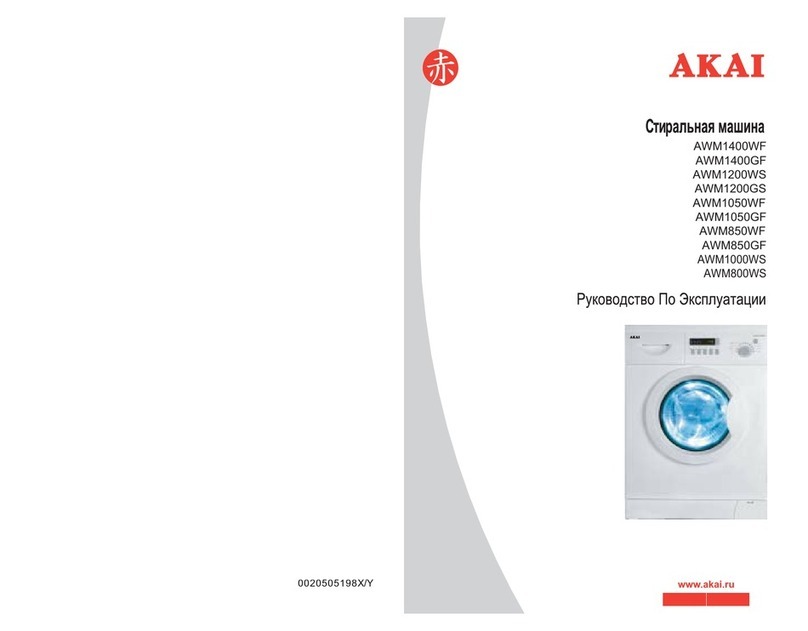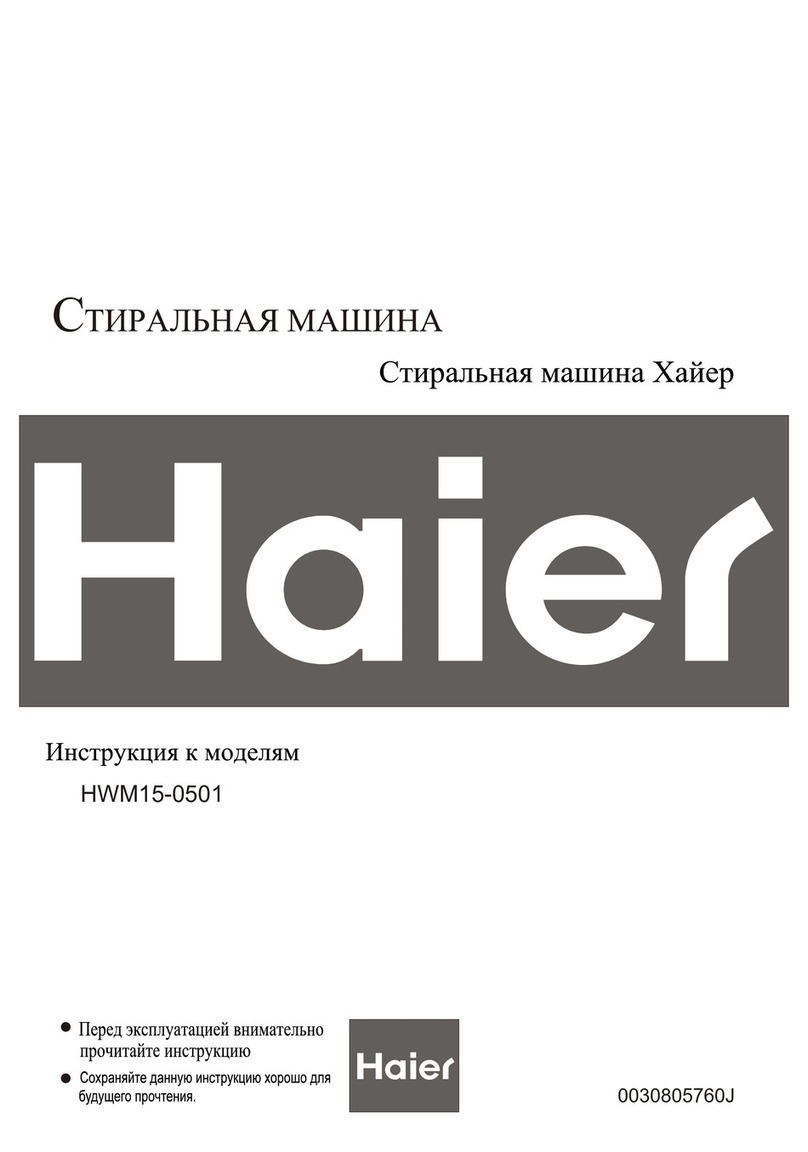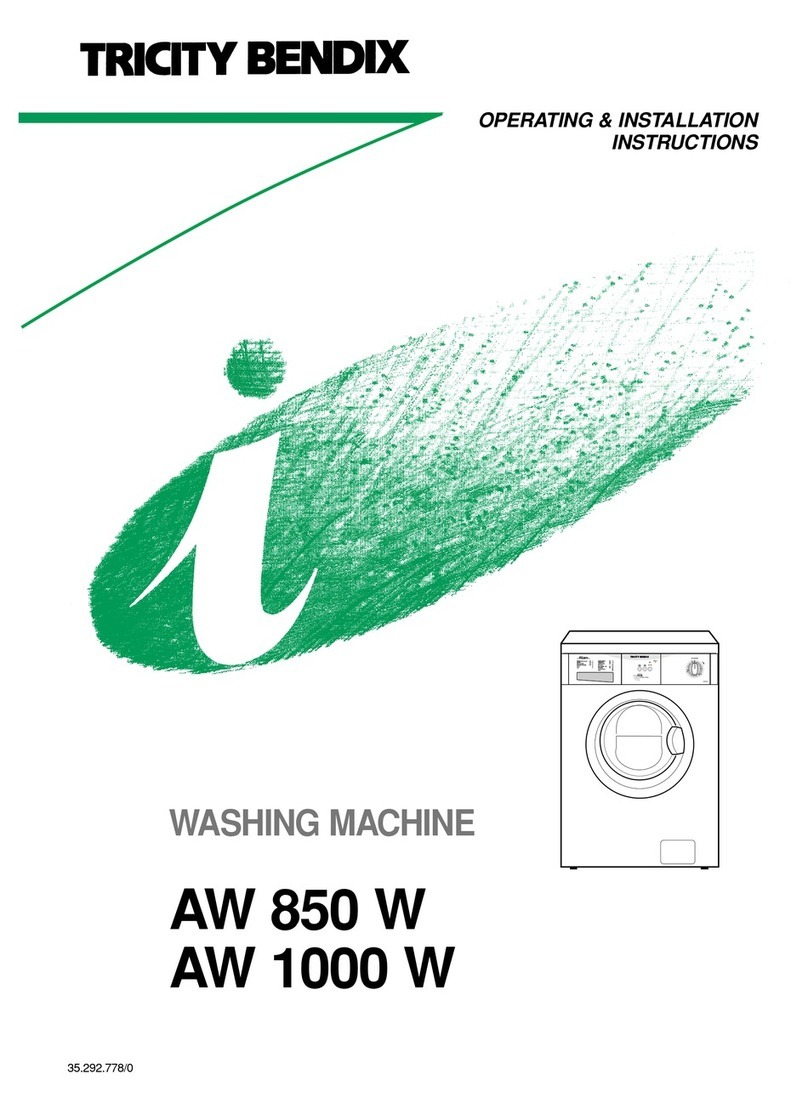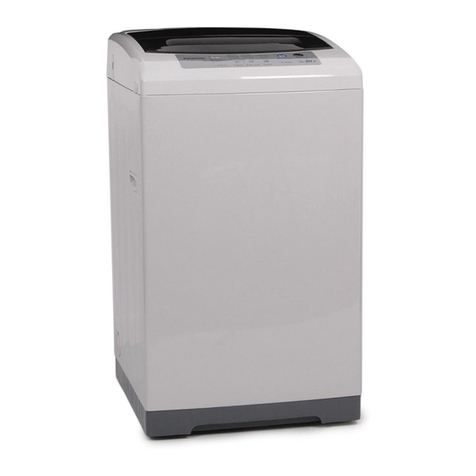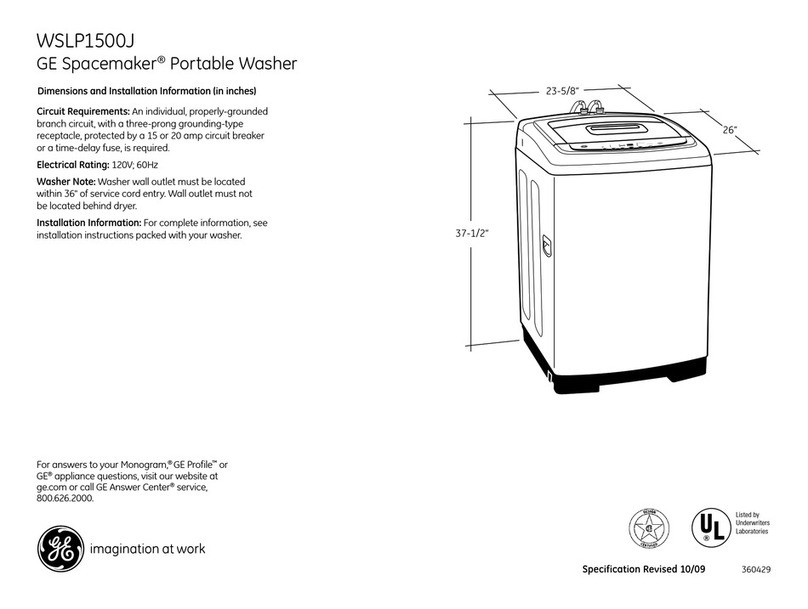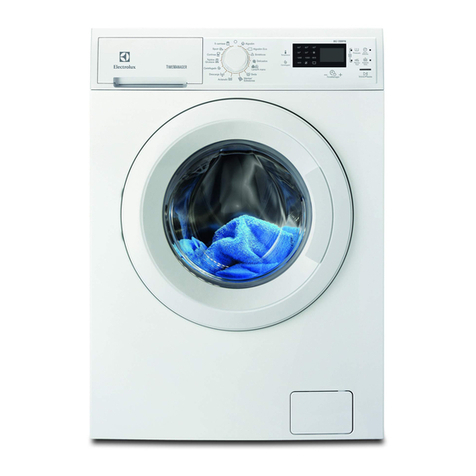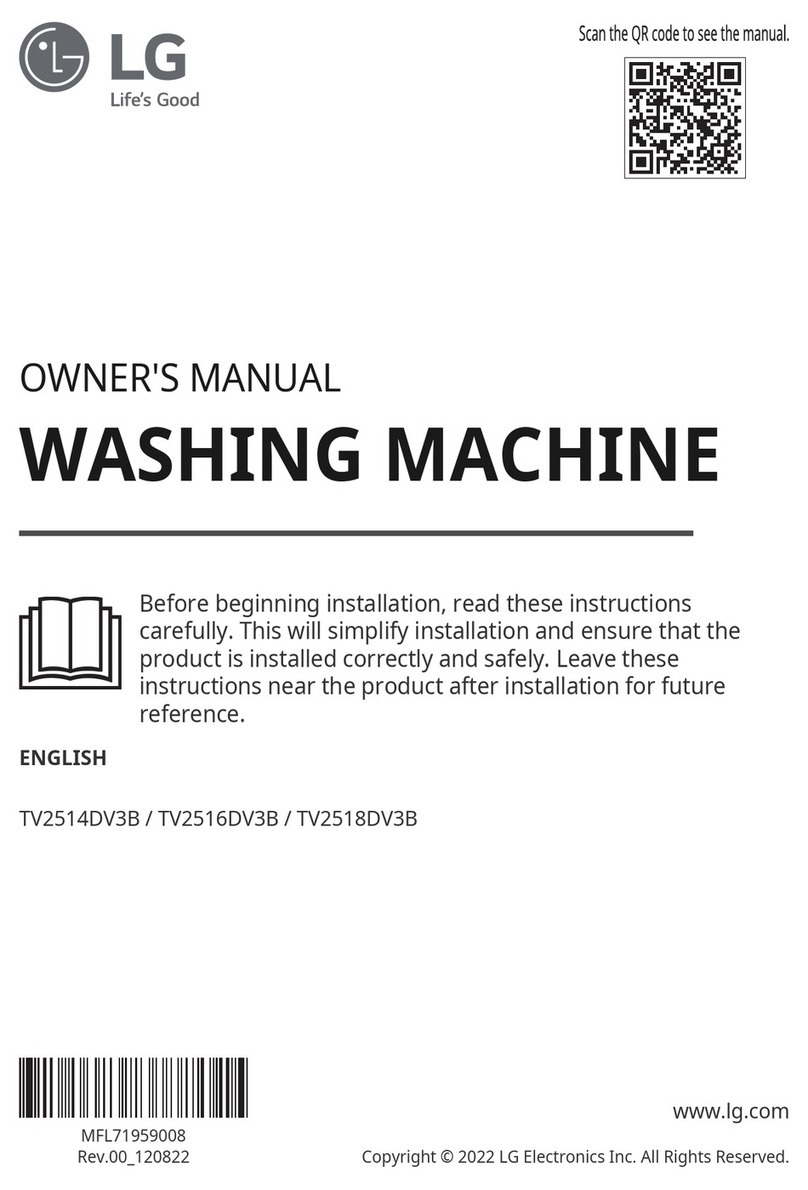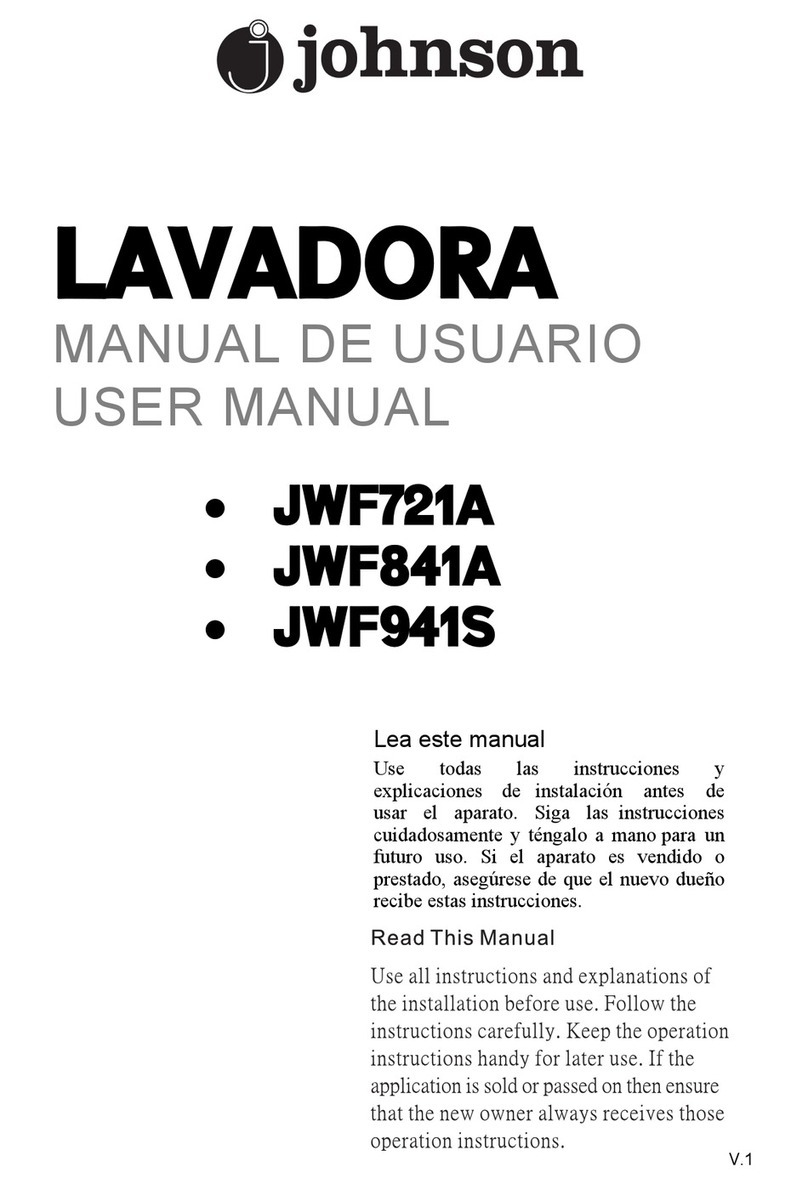~Never clean the machine or near
vicinity with a water hose or a pressure
washer.
~The machine must be disconnected
from the mains electricity supply before
any maintenance or repair work is
carried out. Do not reconnect it until the
maintenance or repair work has been
successfully completed.
The following points should be
observed to assist in maintaining
quality standards for reprocessing
medical devices and sensitive
laboratory glassware, and to avoid
injury to patients or damage to
equipment.
~If the washer-disinfector is being
used for disinfection in accordance with
official regulations on the control of
epidemics, the steam condenser and
its connections to and from the wash
cabinet must be cleaned and
disinfected whenever any repairs are
carried out or parts replaced.
~If it is necessary to interrupt a
programme in exceptional
circumstances, this may only be done
by authorised personnel.
~The standard of cleaning and
disinfection in the disinfection
programmes for medical devices must
be routinely confirmed by the user. The
process must be validated on a regular
basis, and checked against
documented control results. Chemical
disinfecting procedures must also be
validated using chemical or bio
indicators.
~For thermal disinfection, use
temperatures and temperature holding
times to achieve the required infection
prophylaxis in accordance with current
health and safety regulations.
~Medical devices should be
reprocessed by thermal disinfection.
Items which are not heat-resistant, e.g.
operating theatre (OP) shoes, should
be cleaned with the CHEM-DISIN
programme with the addition of a
chemical disinfection agent.
The range of effective disinfection is
based on claims made by the producer
of the disinfecting agent, whose advice
regarding handling, use and
effectiveness must be observed. This
type of chemo-thermal procedure is not
suitable for reprocessing medical
devices.
~Chemical agents could, under
certain conditions, cause damage to
the washer-disinfector. Follow the
recommendations of the chemical
agent manufacturer. In the event of any
damage or material deterioration
please contact Miele.
~Pre-treatments with cleaning or
disinfecting agents can create foam, as
can certain types of soiling and
chemical agents. Foam can have an
adverse effect on the disinfection and
cleaning result.
~Foam must not be able to escape
from the wash cabinet. It would hinder
the correct functioning of the machine.
~The process used should be
checked regularly by the supervisor to
monitor foaming levels.
Warning and safety instructions
7

